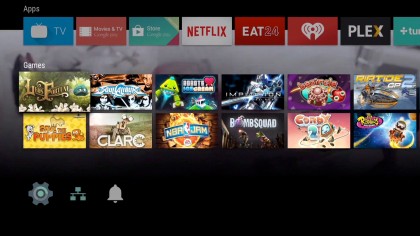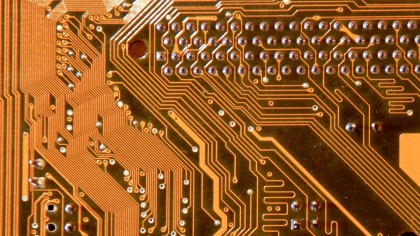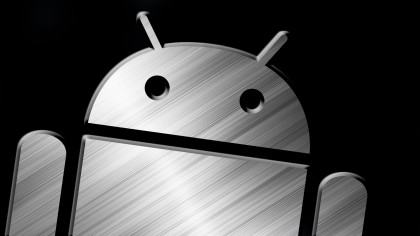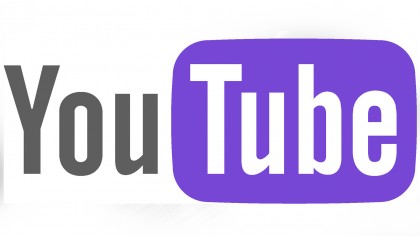What to expect from Google in 2015
Android in TVs, but properly this time
Android on TVs is nothing new. Google had a stab at it with Google TV years ago, something that's all-but forgotten, and there have been loads of set-top boxes running some version or other of Android. They range from the dreadful to the really quite good — the Amazon Fire TV box being the current star.
However, in 2015 we'll see a renaissance of Android on your TV, because of Android TV, a platform Google unveiled in 2014 during the I/O conference. The software is here, and it uses Android 5.0 Lollipop at its core, the same found in the Nexus 6 and Nexus 9.

What we're waiting for is the hardware. At present there's the Nexus Player, a tiny little set-top box, but it's only available in selected territories and really isn't there yet in terms of what you can do with it.
We want to see some other manufacturers jump into bed with Android TV, to produce (fingers crossed) an even lower-cost alternative to the Amazon Fire TV. Android TV is also set to be built into TVs from Sharp, Sony and Philips in 2015.
Proving 64-bit in mobile actually matters
Android 5.0 L is the first version of Google's mobile OS to offer native support for 64-bit processors. We're starting to see them roll-out, and by half-way through 2015 just about every new phone under the sun will have a 64-bit processor. But what will they be good for?
We're hoping Google will show us next year. There's a common perception that the main benefit is that 64-bit system can use 4GB of RAM or more, but that's really just a side benefit.
64-bit CPUs are going to offer way more processor registers than current 32-bit chips, and that'll hugely increase their ability to process large amounts of data at once.
Sign up for breaking news, reviews, opinion, top tech deals, and more.

Despite offering 64-bit support, Google hasn't made a big song and dance about it yet. After all, even its own Nexus 6 doesn't have a 64-bit processor. The 64-bit resolution will be something for 2015 to tackle.
How that'll pan out in Android itself remains to be seen, but it's certainly something to look forward to. One likely benefit is next-gen multi-tasking. Samsung has offered plenty of the stuff in its own custom Android interfaces, but we have a feeling Google may bake-in more sophisticated multitasking in Android next year.
Android Wear's response to the Apple Watch
Google managed to get the jump on Apple with its Android smart watches. By the time the Apple Watch is released, Wear watches will have been out for a full six months.
But how is Google going to respond to Apple's Watch? This is something we're looking forward to finding out about in 2015. We'll likely see tighter integration between watch and phone, increased app support and greater customisation. Android Wear only just got its own section on Google Play — it's a real baby in Android terms.

Google's part in this is of course important, but the new hardware is just as crucial. HTC is going to release its first Android Wear watch in 2015, and the LG G Watch R2 is rumoured to be the first Wear watch to have its own 4G connection, making it far less dependent on a phone.
But will Google or its manufacturing partners address the biggest problem with Android Wear watches, that battery life is pretty much universally rubbish?
Android Silver might become a reality
Android Silver — is it dead or just waiting for 2015? For those not in the know, Android Silver is the long-rumoured series of high-end Android phones that use vanilla Android rather than a custom interface. It's like the Google Play Editions we've already seen, but on a much larger scale.

While these phones have been hotly tipped since early 2014, Silver has reportedly been put on hold after manufacturers simply weren't that interested in the project. It is rather like saying "See all that stuff you've been working on for years? Yeh, bin all that" to companies like Samsung and LG.
Back in May it was reported that LG is to release one of the first Silver phones in 2015, but will it actually turn up? We don't have much faith that it will, not when the Nexus 6 has only just arrived.
Will Android's 2015 cloud have a silver lining? (Sorry… couldn't resist.)
Chrome and YouTube to go child friendly
Google is working on kid-friendly versions of Chrome and YouTube (which it owns) designed for users of 12 years and under. The younger generation is in Google's sights for 2015.
We've seen a handful of tablets designed for kids, but they've almost been universally rubbish, just budget tablets with some half-baked parental control features and lots of colourful plastic.

These kid-friendly versions of apps could well be the start of a move towards bambino-friendly tablets, with potentially much greater optimisation for young users built into Nexus devices. At present there's a bit (you can setup a limited user profile for the kids) but Google could easily do a lot more in this area.
It'd be a sensible move too. Low-cost tablets like the Tesco Hudl 2 are nigh-on perfect family devices, but there isn't really all that much optimisation for younger users. Of course, plenty of them are more advanced than the parents who bought the thing.

Andrew is a freelance journalist and has been writing and editing for some of the UK's top tech and lifestyle publications including TrustedReviews, Stuff, T3, TechRadar, Lifehacker and others.